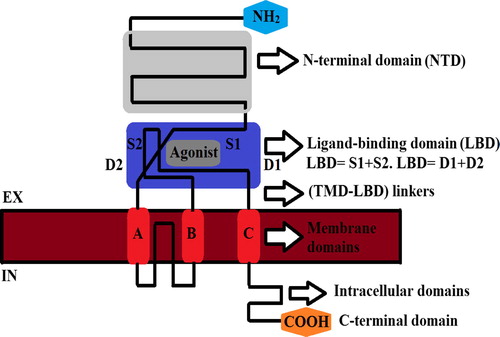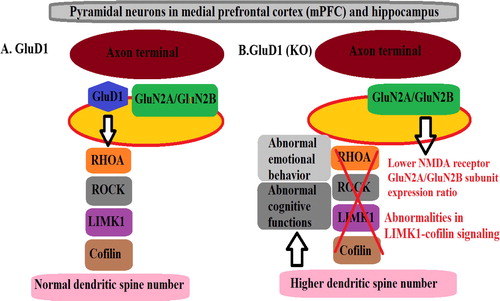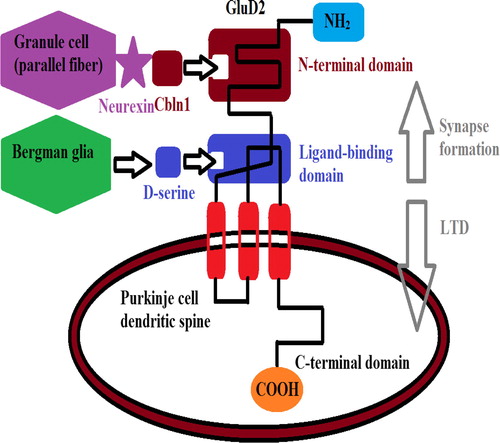Figures & data
Figure 1 Modular domain structure of delta receptors (GluD1, GluD2). Four subunits assemble to form a functional receptor. NTD, N-terminal domain; S1 and S2, sequence segments that form the ligand binding domain (LBD); D1 and D2, globular domains of the LBD, corresponding to the two lobes of the clamshell-like structure; A, B, C, transmembrane domains.

Figure 2 Signaling pathway of GluD1 receptor in the pyramidal neurons in medial prefrontal cortex (mPFC) and hippocampus. A normal LIMK1-cofilin signaling and expression of NMDA receptor GluN2A/GluN2B subunit expression ratio and normal dendritic spine number in the pyramidal neurons in the presence of GluD1 receptor in medial prefrontal cortex (mPFC) and hippocampus. B show abnormalities in LIMK1-cofilin signaling and lower expression of NMDA receptor GluN2A/GluN2B subunit expression ratio, higher dendritic spine number in the GluD1 KO in the pyramidal neurons in medial prefrontal cortex (mPFC) and hippocampus and abnormal emotional behavior and abnormal cognitive functions in mice.

Figure 3 GluD2 signaling pathway. Cbln1 released from parallel fibers (the axons of the granule cells) binds to neurexin containing splice-site 4 (S4+) at the presynaptic site and the N-terminus of GluD2 at the postsynaptic site. The neurexin/Cbln1/GluD2 tripartite complex traverses the synaptic cleft and may function as a bidirectional synaptic organizer. D-serine released from Bergmann glia binds to the ligand-binding domain of GluD2 and regulates AMPA receptor endocytosis and long-term depression (LTD) via the C-terminus of GluD2.

